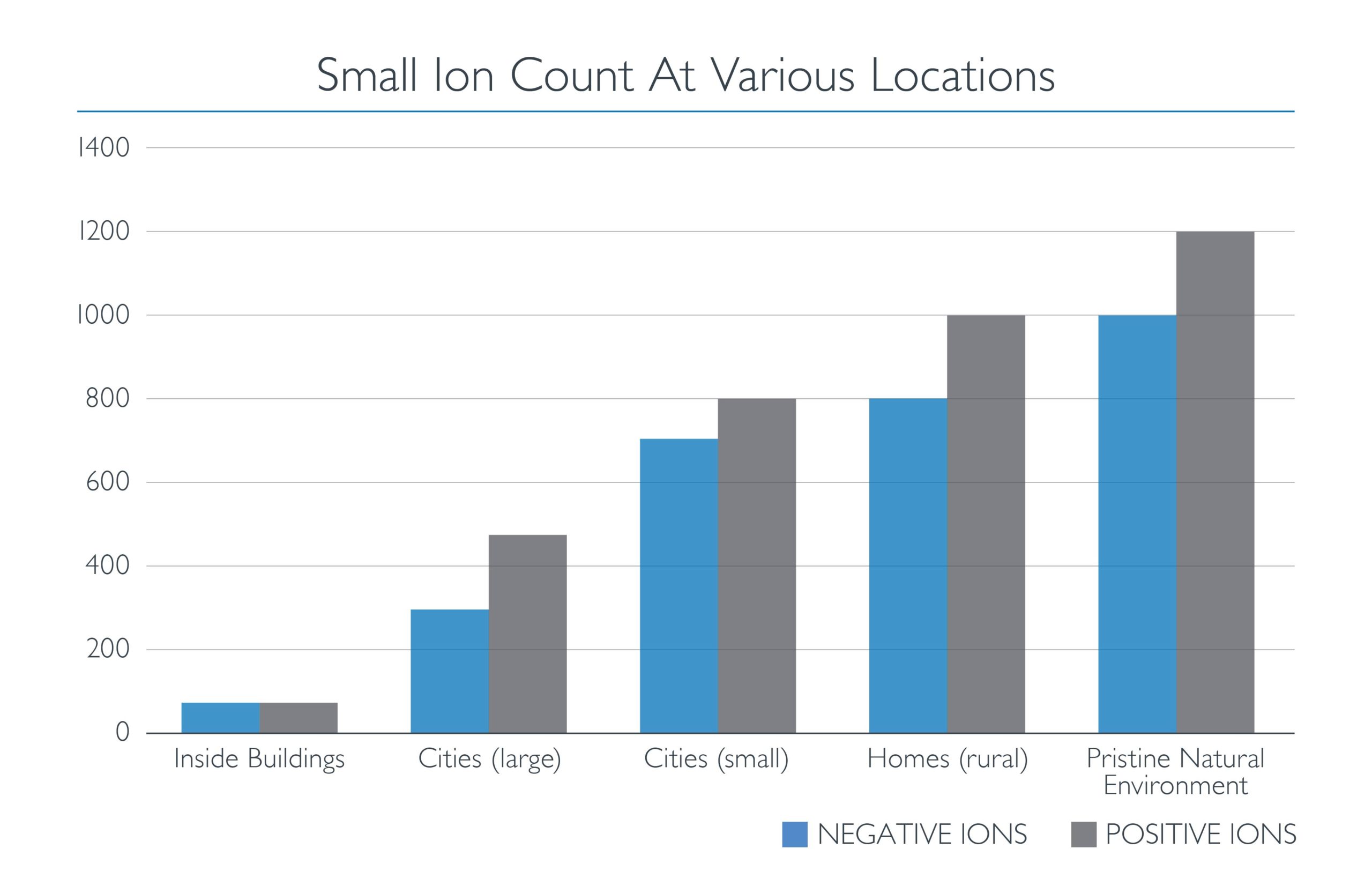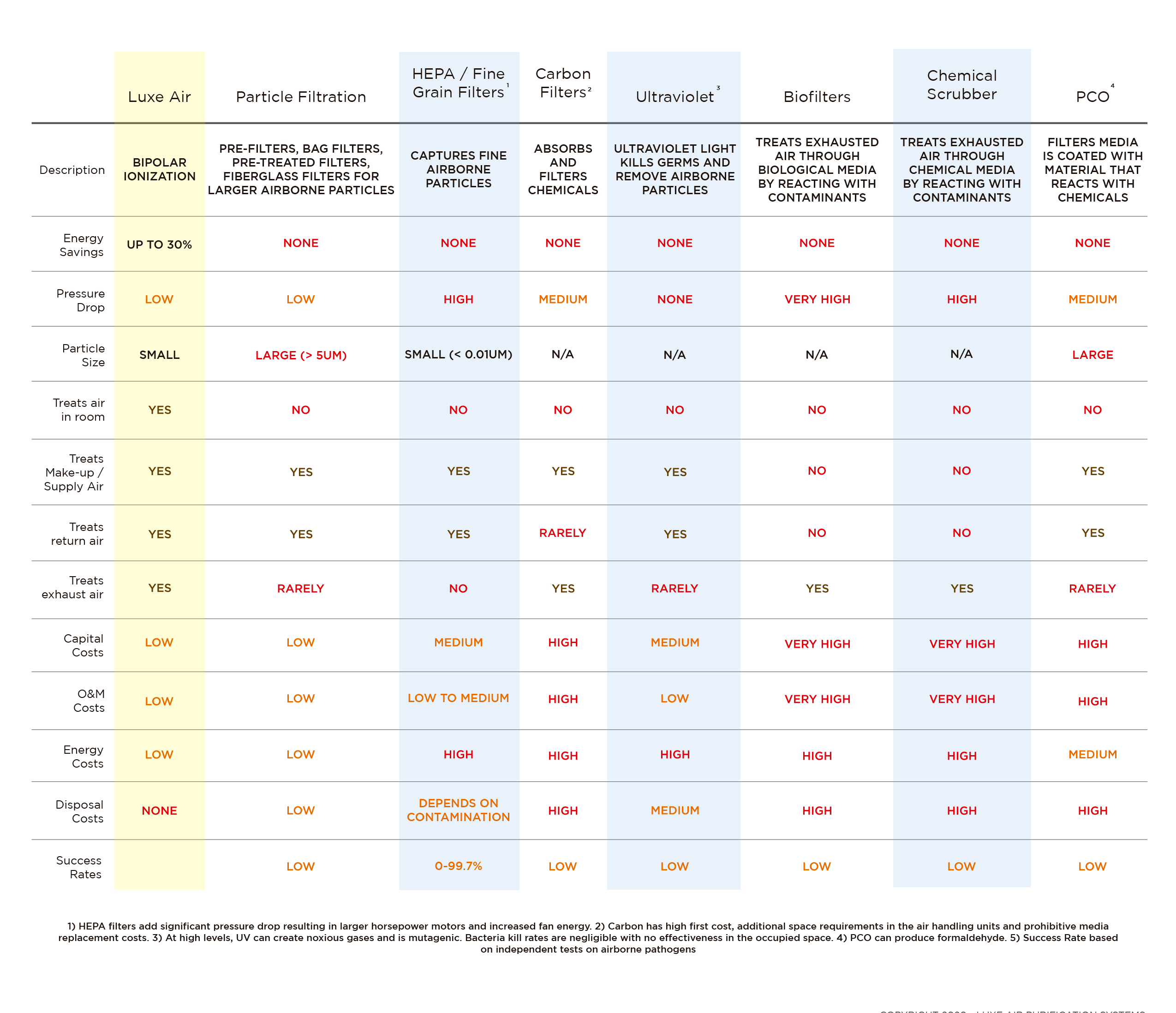How Bipolar Ionization Works to Clean the Air of Pollutants
Much like sunlight does in the atmosphere, Plasma Air technology produces a natural bio-climate rich in positive and negative oxygen ions. The negative ions contain an extra electron while the positive ions are missing an electron resulting in an unstable condition. In an effort to restabilize, these bipolar ions seek out atoms and molecules in the air to trade electrons with, effectively neutralizing particulate matter, bacteria and virus cells, odorous gases and aerosols, and VOCs.

Airborne particles are charged by the ions causing them to cluster and be caught in filters

As they divide to reproduce, bacteria and virus cells bond with oxygen ions and are destroyed

Odorous gases and aerosols oxidize on contact with oxygen ions and are neutralized

Oxygen ions cause a chemical reaction with VOCs breaking down their molecular structure
What Are Oxygen Ions?
Ions are molecules or atoms that contain an electrical charge and exist in nature in various sizes. Small ions only last between 30 and 300 seconds before losing their charge, but are extremely active.
Small ion densities range from 900 to 1,100 negative ions and 1,000 to 1,200 positive ions per cubic centimeter (ions/cm3) in pristine natural environments. At sea level ion density is typically around 500 negative and 600 positive ions/cm3.
In cities and inside buildings ion levels drop by 80% to 95% and can be barely detectable in small spaces.
As ion density decreases, so does the air quality. By increasing the quantity of both positively and negatively charged small oxygen ions, air quality is improved.
This is the basis of Plasma Air’s bipolar ionization technology.

Luxe Air’s Compares to Reactive Air Purification Methods
Luxe Air’s Bipolar Ionization Technology is a superior solution because it proactively treats the air in the occupied space at the source of contamination. Traditional end-of-pipe solutions utilize a reactive “pass-through” or “filtered” approach.

